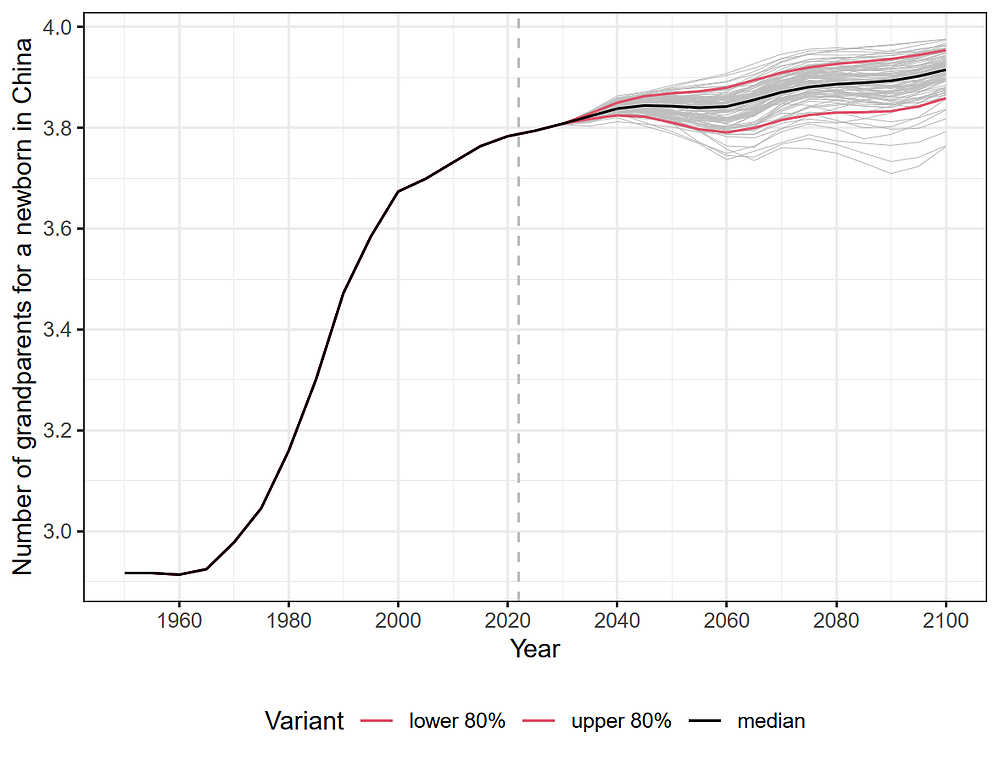Forschungsgruppe
Ungleichheiten in Verwandtschaftsbeziehungen
Auf einen Blick
Projekte
Publikationen
Team
Projekt
Global Projections of Kinship Structure and Kin Availability
Diego Alburez-Gutierrez, Bettina Maria Hünteler
Ausführliche Beschreibung
Demographers have long attempted to predict the future size and composition of populations but have ignored what these changes imply for the structure and age composition of family networks. Kinship structures matter because family solidarity, a crucial source of informal care for millions of people around the world, is conditional on kin availability: Relatives must be, at the very least, alive in order to exchange instrumental, emotional, or financial support.
Changes in kin availability matter to individuals who are providers and recipients of informal care. Especially in the context of rapidly aging populations, ever-slimmer kinship structures are a concern to policy-makers because they increase pressure on systems of social support. Even though the demographic dynamics through which biological kinship structures emerge in populations have long been understood, we know surprisingly little about contemporary kinship structures around the world and how they may develop in the decades to come. Historical evidence suggests that lower mortality and fertility may lead to a higher prevalence of kinship networks dominated by vertical kin (i.e., ascendants and descendants). Mortality decline may also increase the prevalence of multigenerational families, increasing the life-time overlap between grandparents and grandchildren. Later and lower fertility may decrease the likelihood of becoming a grandparent – or it may mean that grandparents are too old and frail to provide support and become instead net recipients of support.
This project will produce projections of biological kin (i.e., the nuclear and extended family) for all countries in the world and over the 2023–2100 period. It will focus on answering the following questions: How will demographic change shape kin availability for future generations? How certain are we about these estimates? What bearings will future kinship structures have for care needs in aging societies? It will outline potential future kinship structures and explore their implications for the availability of kin support. To this end, we will draw on the latest development in kinship demography, demographic microsimulation, and probabilistic demographic projections methods and data. The project will bring together two traditions of demographic inquiry: predicting populations dynamics and modeling family structures.
Average number of living grandparents for a female newborn living in China

Average number of living grandparents for a female newborn in China. Estimated using formal kinship models and data from the 2022 Revision of the United Nations World Population Prospects. Values after 2022 are based on individual probabilistic demographic trajectories. [Unpublished] © MPIDR
Alterung, Sterblichkeit und Langlebigkeit, Demografischer Wandel, intergenerationelle Beziehungen, Projektionen und Vorhersagen, Statistik und Mathematik
Publikationen
Alburez-Gutierrez, D.; Williams, I.; Caswell, H.:
Proceedings of the National Academy of Sciences of the United States of America 120:52, e2315722120–e2315722120. (2023)

Theile, T.; Alburez-Gutierrez, D.; Calderón-Bernal, L. P.; Snyder, M.; Zagheni, E.:
Software. https://github.com/MPIDR/rsocsim: GitHub. unpublished. (2023)
Williams, I.; Alburez-Gutierrez, D.; Song, X.; Caswell, H.:
Software. https://cran.r-project.org/web/packages/DemoKin/: CRAN. unpublished. (2021)